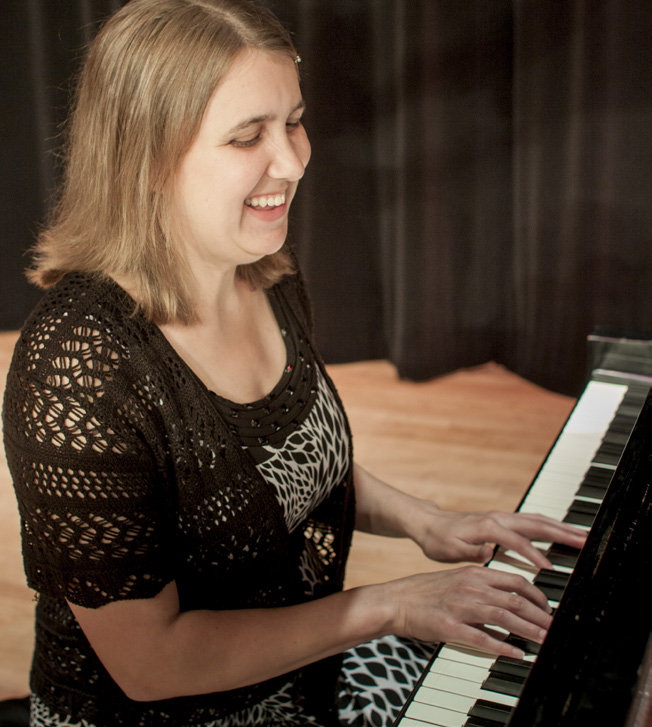“Hi,” Ken Smith says. And that is a small miracle.
Smith, 53, can now vocalize a few other simple words again, too, after a devastating stroke in May 2016 left the Virginia Beach man unable to walk, speak or swallow. Recently, his wife, Becky, asked him a question and he could respond with a “no.” More importantly, he is able to tell her, “I love you.”
The innovative treatment that is rebuilding Smith’s life is called neurologic music therapy, or the clinical use of music to help patients regain communication and movement abilities. The therapy, offered at the Sentara Music and Medicine Center in Norfolk, can benefit people with other neurologic disorders such as Parkinson’s disease, dementia, brain injury and multiple sclerosis as well.
“This has made Ken feel like he has a chance to recover,” Becky Smith says. “I read that stroke victims are prone to depression, and I couldn’t let that happen. At first, he needed a mirror to watch his own mouth move. Now he can say words on his own. He looks forward to going to sessions.”
The melody, rhythm, meter and emotion in music all can be tools to help patients who are struggling to recall or produce words, as well as those with gait problems, says Tracy Bowdish, a neurologic music therapist at Sentara who works with Smith.
For example, many stroke patients robbed of speech will retain the ability to sing because it involves more areas of the brain. So Bowdish might take a word or phrase they want to say – such as “my name is” or “I’d like some coffee” – and sing it back and forth with them, sometimes tapping on their hands or accompanying them on a piano, guitar or drum to work on cadence. Over a period of weeks, she gradually takes the music away and transitions to pure speech.
Depending on what damage a stroke has caused, patients can make progress in retrieving words and information more quickly, adding vocabulary and, eventually, putting together spontaneous phrases and sentences. The earlier a patient gets into therapy, the better.
“You can recruit additional areas of the brain to produce language – literally create new neurological networks,” Bowdish explains. “That can facilitate a significant functional, meaningful outcome.”
For patients who have trouble walking, neurologic music therapists use rhythm to have them walk to a specific beat, based on steps taken per minute and stride length. Over time, therapists will change and speed up that tempo. Patients who tend to “freeze” in place also can learn a cue to propel themselves forward, such as counting, “one, two, ready, go, step.”
Dementia patients often can connect with familiar tunes, adds Jennifer Phillips, a music therapist who has been practicing in Williamsburg for six years. Phillips, who will continue her work after relocating to New York, is in the midst of training to become a certified neurologic music therapist.
Even if music can’t improve memory, it may help reduce anxiety, social isolation, agitation, aggressive behaviors and lack of cooperation with daily activities such as bathing and dressing. “People will say, ‘oh, this person is too far gone, they won’t like anything anymore,’” Phillips notes. “That’s just not true. You can really get them to respond to music.”
Beyond neurologic music therapy, music in general can improve health measures in a wide variety of patients and settings, from mental health facilities and hospitals to jails and schools, according to the American Music Therapy Association. Just a few of the possible benefits are acute and chronic pain relief and improved blood flow, heart rate and mood, studies have shown.
While neurologic music therapy isn’t currently paid for by Medicare, providers have had some success billing other insurance plans and hope coverage will expand as success stories build, Bowdish says. To keep sessions affordable in the meantime, Sentara charges $40 per visit and absorbs the rest of the cost.
For the Smiths, treatment has been worth every penny. In Ken Smith’s case, Bowdish’s approach has included tapping on different parts of his hand to assist with tongue placement – such as under his fingertips for the sound “la”, which requires lifting the top of the tongue to the roof of the mouth. She also has him keep a drumbeat as she plays a different rhythm on her drum, teaching him to ignore distractions and focus on the task he wants to accomplish.
“This truly has helped bring him back to life,” Becky Smith says. “When he’s with Tracy, Ken is comfortable, laughing and enjoying himself. It has just given us so much hope.”








